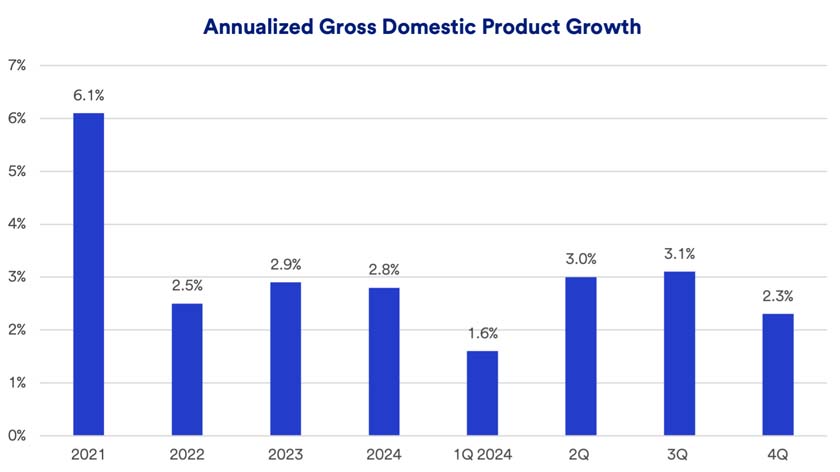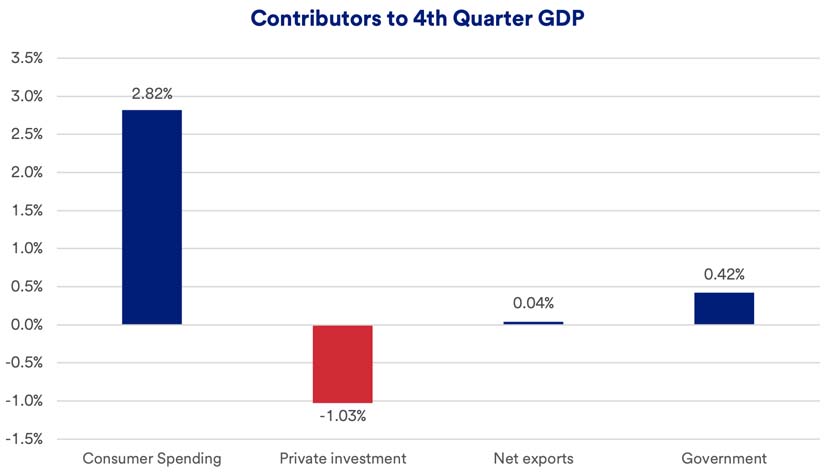“The Fed today is the most hawkish of the major global central banks,” says Haworth, referring to the Fed’s relatively conservative rate-cutting stance. “The economy seems poised to continue growing, which gives the Fed more leeway to slow the pace of interest rate cuts.”
Markets are also closely watching how the new Trump administration's policies could impact the underlying economic environment. President Donald Trump has frequently proposed expanding tariffs on foreign goods imported into the U.S. and stepping up the deportation of undocumented immigrants. “Nobody knows what to expect from the White House,” says Beth Ann Bovino, chief economist for U.S. Bank. “The policy moves are still very unclear, but we do know that a number of those proposals that have been talked about by the White House are a bit inflationary, and I think that’s going to keep the Fed in check.”
Implications for investors
Throughout 2024, the economy’s ongoing strength helped corporations meet or exceed earnings expectations. For the second consecutive year, the S&P 500 generated total returns exceeding 25%.5 Haworth says the earnings outlook remains favorable. “There appears to be a sufficient level of economic growth to keep the market buoyant, although likely with a degree of volatility.”
In the current environment, investors may wish to consider a modest overweight of equities and a modest underweight of fixed income, with a neutral position in real assets. Haworth says this reflects an economic environment that, in the near term, appears to put equities in a position to outperform fixed income.
If economic growth tracks closely to the previous two years, Haworth says there may be some market rotation that works to the benefit of stocks that underperformed the broader market. “Attention may turn to where earnings are growing,” says Haworth. “We may see more beneficiaries going beyond those technology companies that dominated the markets in 2023 and 2024 based on the artificial intelligence investment boom.”
Consider reviewing your current portfolio with your wealth management professional to determine if it’s consistent with your long-term goals and positioned to meet your needs in today’s market and economic environment.
Note: Diversification and asset allocation do not guarantee returns or protect against losses. The Standard & Poor’s 500 Index (S&P 500) consists of 500 widely traded stocks that are considered to represent the performance of the U.S. stock market in general. The S&P 500 is an unmanaged index of stocks. It is not possible to invest directly in the index. Past performance is no guarantee of future results.




